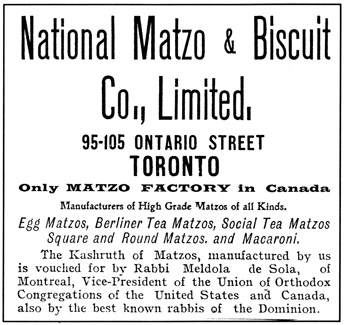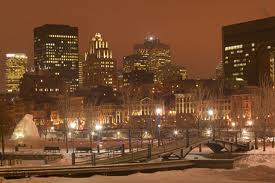 Snow was gently falling as I boarded the train at Toronto’s Union Station for VIA Rail’s recently-introduced overnight sleeper car service to Montreal. Before long I was sipping a drink and engaged in conversation with a fellow passenger in the glass-roofed dome car.
Snow was gently falling as I boarded the train at Toronto’s Union Station for VIA Rail’s recently-introduced overnight sleeper car service to Montreal. Before long I was sipping a drink and engaged in conversation with a fellow passenger in the glass-roofed dome car.
“What is it about Toronto? They’re such amateurs when it comes to clearing snow. The streets are always so messy after a snowfall. Not like Montreal.”
I am a born-and-bred Torontonian, and I came to the city’s defense.
“On the contrary,” I said. “We take snow very seriously. Don’t you remember that Mayor Lastman called in the army after the great snowfall of ’99?”
This brought a dismissive smile and a sorry shake of the head, and I realized too late that it was the wrong thing to have said. “The army! We had the Great Ice Storm and nobody called in the army until at least a week later. In Montreal we know how to handle snow.”
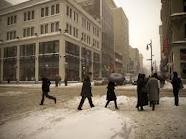 During the night, I raised the blind in my cosy single berth and saw snow swirling elegantly as in a glass paperweight. Soft as cotton, the white stuff blanketed the tracks parallel to our own and muffled our rhythmic locomotion.
During the night, I raised the blind in my cosy single berth and saw snow swirling elegantly as in a glass paperweight. Soft as cotton, the white stuff blanketed the tracks parallel to our own and muffled our rhythmic locomotion.
After arriving at Gare Centrale at 8 AM, I traversed a series of passageways to the Hilton Bonaventure. Not until I reached my room, which stood many stories above the street, did I fully comprehend that the city had become a vast snowscape. Peel Street was whited out as it stretched towards the dim silhouette of Mount Royal.
Still, our city tour proceeded as scheduled, taking in Ste-Catherine and Sherbrooke Streets, the Old City, the Atwater Market, the antique shops along Notre Dame and other sites. The bus made it up the crest to St. Joseph’s Oratory, even up the mountain along Cote des Neiges, although the weather greatly subdued the usual panoramic view.
“Each snowstorm costs the city $8 million,” Francine, our tour guide, said. “We start clearing the snow right away here, we don’t wait until it stops. And you notice that we put our parking meters away from the curbs, often right up against the buildings, so they don’t obstruct the plows. Not like some Canadian cities.”
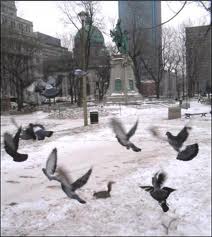 At the McCord Museum (600 Sherbrooke W.) an intriguing exhibit entitled Simply Montreal displays many old-fashioned artifacts of winter, including mittens, scarves, skates, snowshoes, and models of pot-bellied stoves and horse-drawn sleighs.
At the McCord Museum (600 Sherbrooke W.) an intriguing exhibit entitled Simply Montreal displays many old-fashioned artifacts of winter, including mittens, scarves, skates, snowshoes, and models of pot-bellied stoves and horse-drawn sleighs.
Historic photographs show natural ice-bridges spanning the St. Lawrence, so-called “ice shoves” taller than buildings that the river has pushed onto streets along the harbor, and the glorious six-storey Ice Palace of 1877, which was “by day, a house of alabaster (and) by night a giant lantern.”
Montreal, according to the McCord, mobilizes an armada of 160 snowplows, 210 sidewalk plows and 110 snowblowers to clear an annual total of 7.5 million cubic feet of snow. The city is truly geared for winter.
Over the next three days, whenever I left the extensive underground network of interconnected malls and buildings, I found the sidewalks in clean and passable condition, and much of the above-mentioned armada busy at work. And still the snow kept falling.
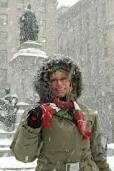 Back at the Hilton Bonaventure, I decided to do what most Montrealers do — take winter in stride. What better way than to enjoy a swim in the (mostly) outdoor rooftop pool?
Back at the Hilton Bonaventure, I decided to do what most Montrealers do — take winter in stride. What better way than to enjoy a swim in the (mostly) outdoor rooftop pool?
Snowbanks had gathered on all sides, and a profuse steamy fog was rising from the well-heated water. With snow falling on rooftop cedars and dancing around neighbouring office towers, I snuggled into the water’s womblike warmth and happily, joyously, let the snow fall on my head. ♦
Bill Gladstone visited Montreal as a guest of Tourisme Montreal.
© 2003







